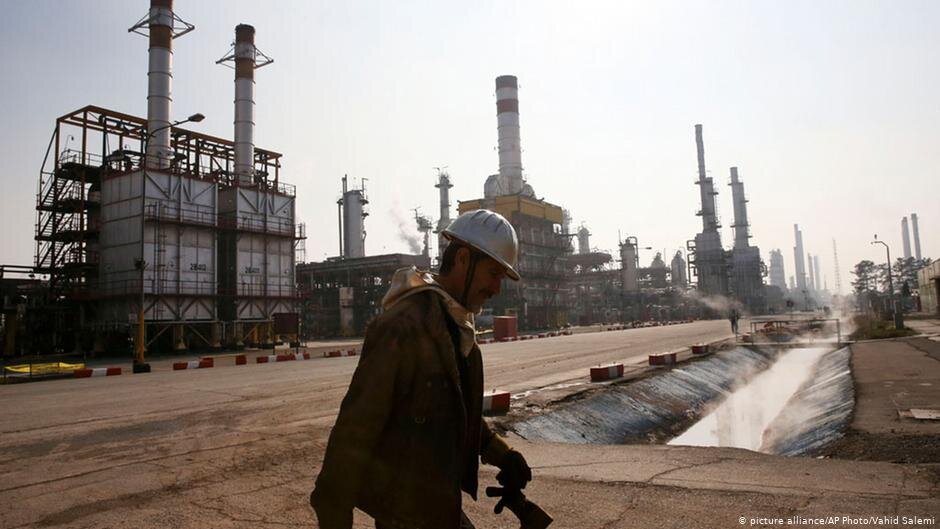U.S. allies in Asia paying the price for Iran sanctions

TEHRAN – As one of the world’s top oil producers, Iran for long has been among the major crude suppliers to Asia and due to its high quality reserves which are significantly low in sulfur, many Asian refineries are designed to solely process various grades of Iranian crude oil and gas condensate.
When in May 2018, the U.S. withdrew from Iran’s nuclear pact, many of Iranian oil buyers, especially in Asia, cried objection and asked to be exempted from the sanctions. In response, the U.S. granted a 180-day waiver to eight countries, including China and India, South Korea, and Japan, allowing them to gradually reduce their shipments of Iranian oil and find replacement suppliers.
Although even after the waivers were expired in May 2019, many of Iranian buyers defied U.S. and continued their imports of crude oil from Iran, however, some, more conservative, countries like South Korea and Japan gave in to the U.S. pressures and despite their national interests, stopped buying Iranian oil. Maybe, at the time, the mentioned countries weren’t aware of the long-term consequences of conforming to U.S. demands.
Now, more than six months after the expiration of the waivers, those Asian allies of U.S., which were in fact among the top importers of Iranian oil, are sadly the ones who are taking the blow from Washington’s sanctions on Iran, the most.
South Korea and Iranian condensate
According to the U.S. Energy Information Administration, South Korea is among the top five importers of crude oil in the world. Three of the 10 largest crude oil refineries in the world are located in South Korea, and since the Asian country doesn’t have any oil reserves of its own, it is highly dependent on Middle East’s oil supplies.
On the wake of the new sanctions on Iran, the biggest supplier of gas condensate to South Korea, the country has been forced to seek alternative sources of crude oil and especially condensate to keep its refineries and petrochemical industry running.
As I mentioned earlier, Asian refiners, especially in South Korea, have long favored Iran’s crude oil and condensate for its rich yield of naphtha, a raw material that is a key feedstock for the petrochemical industry. Most of them are especially designed to process Iranian and Qatari condensate which has low levels of sulfur and leaves no residue. Moreover, they prefer Iranian condensate over Qatari condensate because it is relatively cheaper and comes with better deal conditions.
With the U.S. sanctions coming to effect, Seoul had to forget this cheap and high quality source of crude oil to keep its Western ally content.
In late 2018, the first signs of the price that South Korea was going to pay for U.S. actions started to show; The Asian country bought and tested 23 different types of condensate from 15 countries as possible substitutes for Iranian condensate for which the country had to pay about $9 billion.
The sole beneficiaries
Taking advantage of the situation, U.S. has been pushing its condensate on South Korea, for which Seoul has to reconfigure its refineries that are built to process Iranian grades.
Imports from the United States nearly tripled to 1.09 million tons in June, or 264,745 bpd, according to Reuters data.
Following its decision to comply with U.S. sanction, the Asian country is finding itself in a very difficult position. Interestingly, the U.S. crude suppliers exporting to Asia are the sole beneficiaries of the current situation.
As they are finding it out in a very hard way, the price of replacing Iran’s crude oil is not going to be small.
The U.S. President Donald Trump has called, many times, for Asian countries to stop buying oil from Iran and has continuously claimed that the U.S. will protect the interests of its allies. However, the sky rocketing shipping costs from U.S. to Asia and the relatively expensive prices of American crude cargoes are telling a different story. It seems that despite Trump claims, the ‘service free of charge’ under the name of U.S. alliance is rather an illusion.
Surging oil tanker rates
In addition to the supply aspect of the dilemma, the issue of shipping the cargoes is yet another problem for Asian crude consumers.
Last week, Reuters reported that freight rates to ship U.S. crude to Asia were continuing to surge, and costs to charter a supertanker hit a new record of $12 million.
As reported, South Korea’s top refiner, SK Energy, chartered a supertanker called Pacific M at a record price of $12.35 million to ship U.S. crude to the country.
The surge in the prices came after the U.S. imposed sanctions on China’s COSCO in late September, due to what they claimed was involvement in shipping Iranian crude oil.
The interesting thing is that U.S. crude exports have increased significantly since the country re-imposed sanctions on Iran. According to the U.S. Energy Information Administration the exports surged to an average 2.9 million barrels per day (bpd) in H1 2019.
And guess where the top regional destination for U.S. crude has been! You were right, Asia.
EF/MA

Leave a Comment